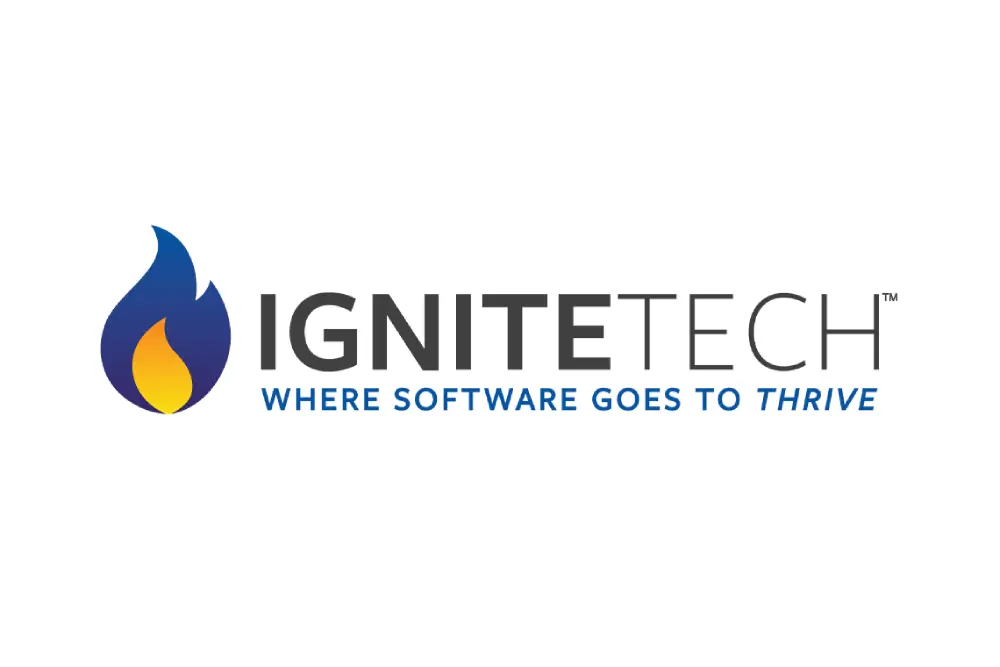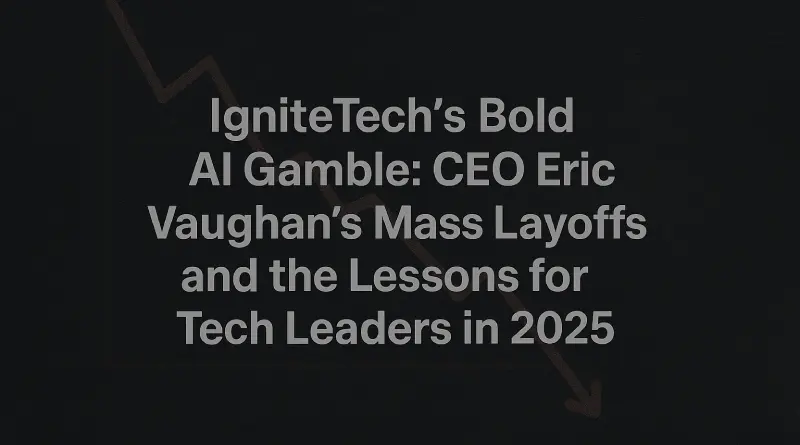IgniteTech’s Bold AI Gamble: CEO Eric Vaughan’s Mass Layoffs and the Lessons for Tech Leaders in 2025
In the fast-growing sphere of artificial intelligence, in which global AI investments will reach 200 billion dollars in 2025 (an AI Index Report by McKinsey states such), the aggressive actions of exactly one CEO have caused heated discussion. Eric Vaughan, the chief executive officer of a company named IgniteTech that deals in enterprise software, became a headliner in 2023 when he laid off almost 80 percent of his workforce, all of whom had opposed the use of AI. Vaughan remains unapologetic two years later; by August 2025, he told Fortune he would make the same move, as AI is an existential threat to all companies. This is a case described in the August 17, 2025, article in Fortune—a story about the conflict between innovation and labor forces. With the Indian tech industry, which is expected to generate 10 percent of GDP by 2025 (NASSCOM statistics), also struggling with the changes, Vaughan can be seen as a warning sign. This blog is an overview of the events, consequences, and specific insights that owners of businesses should keep in mind as they integrate AI without fear of losing their talent.
The Backstory: From AI Mandate to Mass Overhaul
Vaughan started his pilgrimage in early 2023, when the generative AI wave hit the Internet through such tools as ChatGPT. Believing AI would transform the way business was done, he announced an all-hands pivot: “We were all now AI-first,” says Fortune. IgniteTech dedicated 20 percent of payroll to training, reimbursement of tools and classes, and the establishment of AI Mondays—days devoted to AI projects only. There are no customer calls, no budgets; there is only AI immersion through all departments, including tech and sales.
Opposition was quick and extensive. Astoundingly, technical personnel who have usually been perceived as enthusiasts of AI were the most resistant and argued against it based on constraints and the fear of becoming irrelevant. About a third of employees undermine AI projects, according to a Writers AI study that is cited in Fortune:41 percent of Gen Z and millennials outright refuse AI training or submit low-quality work. Vaughan detailed sabotage, exemplified by intentional mediocrity, so his harsh decision was to lay off hundreds in 12 months and cut the head count by 80 percent (Fortune-verified figures).
Insight: This was not meant to be downsizing but a cultural war. Vaughan has explained to Fortune that it was more difficult to change minds than to add skills. Such opposition is emerging in India, where AI has the potential to take away 45 percent of working hours by 2025 (according to a McKinsey India report). A Nasscom survey of 500 Indian companies in the year 2025 indicates 35 percent have resistance among employees, especially mid-level technical workers, in fear of being laid off due to economic hardships such as 6-7 percent inflation (RBI data).
The Results: Triumph or Trauma?
As of late 2024, IgniteTech was enjoying the spoils: nine-figure sales, 75 percent EBITDA margins, and two patent-pending AI solutions, as Vaughan told Fortune in an interview. The efficiency was achieved by the team being redesigned to work to AI alignment. However, Vaughan found the human cost to be very high—he described it as extremely difficult and does not recommend that it be replicated.
Reactions vary. Times of India (August 18, 2025) raised valuable ethical issues, which have been seen in the history of global sabotage. DTV Profit (August 19, 2025) pointed out what Vaughan meant by seeing AI as cultural and business changes rather than technological. A WRITER survey observes that without buy-in, AI investments are 2.5 times more likely to fail, but where companies do have a strategy, there is a 2.5 times higher chance of success.
Local relevancy in India: India is expected to have 3.5 million jobs in AI by 2027 (NASSCOM), and stories like Vaughan’s can reverberate with layoffs at tech companies such as Infosys (it is planning to lay off 10,000 employees by 2025 due to AI trends). Yet the craftiness of Indian labor laws (requiring 21 days’ notice before mass firings) makes such restructurings hazardous, so gradualist “reskilling” packages. Distinctive foresight Unlike Vaughan, who recommended ripping and replacing the employees, TCS takes 70 percent of its staff and upskills them (TCS 2025 report), and through perks such as bonus payments on AI certification, it reduces the resistance to change by 25 percent.

Broader Implications: Balancing AI Push with Employee Trust
That saga highlights a boy who cried wolf problem: a previous buzz about NFTs and blockchain has contributed to the decrease of trust, according to writer Kevin Chung in Fortune. The reason why workers put up resistance is that AI tends to interrupt work processes without obvious advantages; insufficient cultural change of firms can deliver ROI on AI, according to McKinsey data.
To leaders there are lessons aplenty:
- Build Up Buy-In Early: Begin with pilots; the IKEA "augmentation, not automation" philosophy (Fortune) creates time to do creative work, increasing adoption.
- Counter Fear by Countering: Provide up-front reskilling: Indian edtech reskilling platform upGrad is seeing a 40% enrollment increase in AI courses due to fear of layoff.
- Quantity Beyond Number: Both high profits and morale losses liability; the Gallop 2025 survey correlates dwelt alterations with 30 percent greater turnover.
Wildcard knowledge: In new economies such as India, where by 2025 60 percent of workers will be under age 35 (World Bank data), AI training gamification (e.g., on a Duolingo-type platform) might reduce resistance time by half in 2025, according to a 2025 Deloitte India report. Although Vaughan is doing this for work, his approach is likely to be unpopular in talent-poor areas in IL. As IT attrition in India soared to 20% by the year 2025 (TeamLease).
Looking Ahead: AI's Double-Edged Sword
And Vaughan admonishes that no company is immune to AI disruption, echoing McKinsey that generative AI could bring in an annual value of $4.4 trillion by 2030. However, the ethical adoption is the priority—the report by WRITER emphasizes official measures against sabotage.
It is possible that such balanced perspectives as Vaughan’s (excluding the extremes) may succeed in India, where AI is projected to add about half a trillion dollars (500 billion) to GDP by 2025 (NITI Aayog). Managements have to balance between emergency and compassionate programs:Reskill, not replace.
This is not a mere warning against caution but a step-by-step guide. Businesses should learn to take AI advantages by ensuring that they do not focus on technology at the expense of culture. In the words of Vaughan, it is important to have, as he says, everyone in the same boat rowing in the same direction.
Disclaimer
The information presented in this blog is derived from publicly available sources for general use, including any cited references. While we strive to mention credible sources whenever possible, Web Techneeq -Digital Marketing Agency in Mumbai does not guarantee the accuracy of the information provided in any way. This article is intended solely for general informational purposes. It should be understood that it does not constitute legal advice and does not aim to serve as such. If any individual(s) make decisions based on the information in this article without verifying the facts, we explicitly reject any liability that may arise as a result. We recommend that readers seek separate guidance regarding any specific information provided here.

